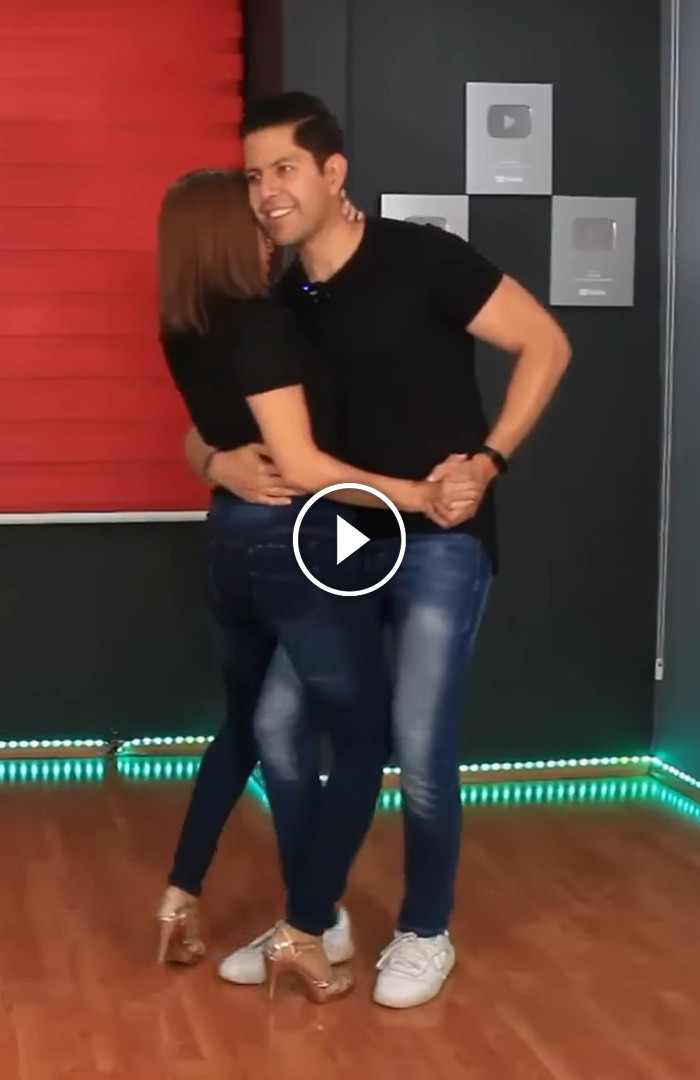Norteñas dance is a vibrant and energetic Mexican folkloric dance for couples, set to the lively rhythm of norteña music. Characterized by its distinctive bouncing step and the constant turning of partners in a close embrace, Nortenas is a joyful and social dance. If you’ve been wanting to learn this exciting dance, now is the perfect time to start! This guide will walk you through the fundamental steps of Nortenas Dance, drawing inspiration from a helpful tutorial (even though originally in Spanish, the steps are universally understood). We’ve broken down the key elements in English to get you moving on the dance floor.
Let’s dive into the essential elements of nortenas dance and get you started with the basic steps.
The foundation of Nortenas dance is the “rebote,” or the bounce. This bouncing motion is what gives Nortenas its unique feel and rhythm. To achieve the rebote, imagine you’re lightly bouncing to the music. The instructors, Oscar and Luz, from the tutorial, emphasize bending your knees slightly and moving your body gently up and down in time with the music. For those just beginning, the focus should be on mastering this rebote. Get comfortable with the up and down rhythm before adding footwork or partner steps. This foundational bounce is crucial to capturing the essence of nortenas dance.
 YouTube video
YouTube video
Once you feel comfortable with the rebote, you can start incorporating footwork. There are a couple of basic footwork patterns that beginners can use to add variety to their nortenas dance. One option is a dragging or sliding step, moving your feet gently back and forth while maintaining the rebote. Another variation involves taking small walking steps forward and backward, again, without lifting your feet too much and always keeping the bouncing motion. The important thing to remember is to keep the rebote going while you move your feet. Unlike dances to Banda music, Nortenas doesn’t involve a strong side-to-side weight transfer; the movement is primarily up and down with the bounce, while the feet move subtly. Keep your hip motion relaxed and natural; avoid exaggerated hip movements to maintain the authentic Norteno style. Practice these footwork patterns individually to get comfortable before combining them with a partner.
Transitioning into partner dancing in Nortenas involves understanding the proper frame or hold. The lead’s right hand is placed on the follow’s back, while their left hands are joined. The follow’s free right hand can either be relaxed or gently placed on the lead’s shoulder. A slight lift of the follow’s right hand by the lead can provide a bit more space and freedom for movement. The initial practice in partnerwork should focus on simply doing the rebote together, feeling the rhythm as a couple. Once comfortable with the partnered rebote, start incorporating the sliding or walking steps you practiced earlier.
 Nortenas dance instructors demonstrating steps
Nortenas dance instructors demonstrating steps
The key to smooth partnerwork in nortenas dance is for the lead to clearly mark the steps, allowing the follow to move in sync. This clear leading and following, combined with the consistent rebote and simple footwork, creates the dynamic and engaging partner dance that is Nortenas.
To appreciate Nortenas dance fully, it’s helpful to understand its musical and cultural context. Norteñas music, and consequently the dance, originated in northern Mexico in the late 19th century. This style of Mexican country music has gained immense popularity throughout Mexico, the United States, and in both urban and rural settings. Interestingly, norteñas music and dance are not monolithic; they encompass various regional styles. For example, Texan norteño often incorporates American musical influences, while styles from Nuevo León and Tamaulipas show blends with Caribbean musical elements. Even states like Jalisco and Sinaloa, known for banda and duranguense music, also have their own distinct norteño variations. Understanding this rich tapestry of regional styles can add depth to your appreciation of nortenas dance.
So, there you have it – your starting point for learning nortenas dance! Now, it’s time to put these steps into practice. Start with the rebote, then add the footwork, and finally, try it out with a partner. Enjoy the process of learning and embrace the lively and social spirit of nortenas dance. Happy dancing! If you found this guide helpful, share it with your friends and fellow dance enthusiasts to spread the joy of Nortenas.
